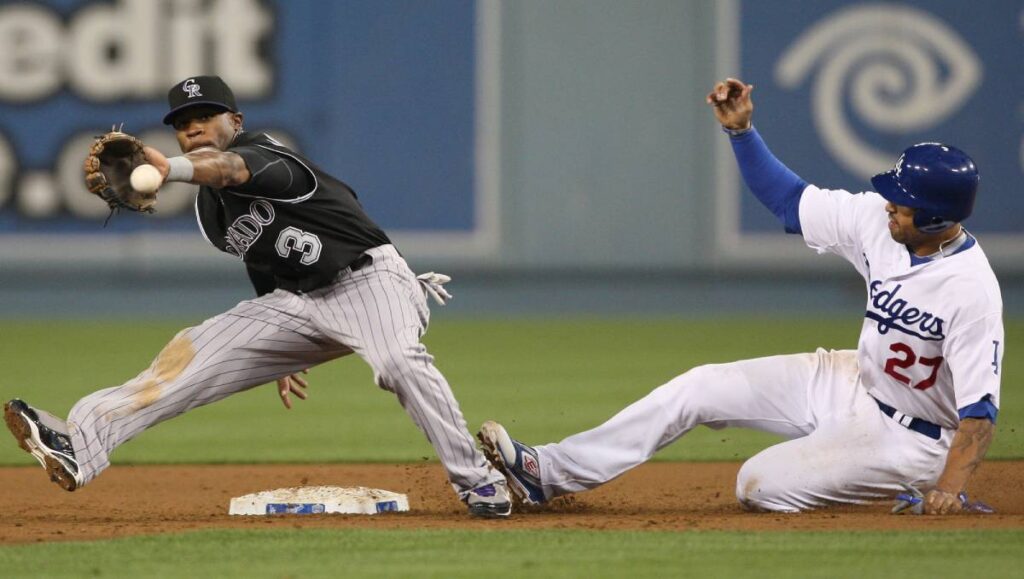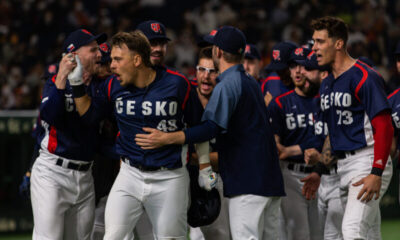More
American League Baseball transfer bombshell: Two Japanese players head to MLB clubs in Los Angeles
The entire United States of America is in anticipation of one transfer bomb in the baseball world at the turn of the year. Two baseball clubs in the US are reportedly behind it, the Los Angeles Angles, playing in the American League and the Los Angeles Dodgers, playing in the National League.

The entire United States of America is in anticipation of one transfer bomb in the baseball world at the turn of the year. Two baseball clubs in the US are reportedly behind it, the Los Angeles Angles, playing in the American League and the Los Angeles Dodgers, playing in the National League.
It was one of the sport’s biggest stars in Shohei Ohtani. Both Los Angeles clubs were interested in him. However, the Japanese player turned down the offer from the National League MLB Los Angeles Dodgers, as he is coming off surgery, so he will most likely not pitch next year, but his bat can be lethal.
If it wasn’t for his injury this year, he would have definitely turned out better than “only” fourth among hitters in terms of home runs hit in an MLB season. Meanwhile, he only needed 135 games to hit 44 home runs. The best pitcher Matt Olson of the Braves pitched a full 162 games, and only recorded ten more home runs than the aforementioned Japanese. Additionally, in the 2021 season, Shotime became the first player in All-Star Game history to be selected as both a hitter and pitcher. Moreover, this was repeated in the following two seasons.
Shohei also shined at this year’s World Baseball Classic, where he celebrated the title with Japan, and his strikeout against American M. Trout in the final of the World Baseball Classic, where he was the MVP, will always be legendary.
He certainly made his mark on the hearts of Japanese fans by refusing the highest national honour, as he felt he was too young. His humility, which he was brought to since childhood, is also evidenced by the fact that after winning a match at the aforementioned unofficial World Cup, he expressed his respect for the Czech national team on social media. This was shortly after we lost in the group stage after a good performance against Japan.
To make matters worse, people who are somehow around MLB, and it doesn’t matter if they’re in the stands or in the commentary studio, were literally derailed by his decision to defer an overwhelming portion of his salary, seeing only $2 million a year of the $700 million he signed. The remainder, about 97 percent of the total, will be paid to him after his contract is up, in regular annual installments over ten years. In order to fulfill the spirit of the contract, Shohei mainly has to finish the contract peacefully until 2033, when it ends.
For this season, the Japanese hitter and pitcher still managed to be re-signed by the Angels even as an injured player (the rival Dodgers were understandably interested), increasing his salary more than five times from last year, to a flat $30 million. Purely theoretically, if he hadn’t rushed to MLB and had lasted in Japan – the second-best league in the world – he undoubtedly wouldn’t have suffered the fate of his colleagues who jumped in at a later age and weren’t subject to the strict transfer terms of both leagues.
Masahiro Tanaka, Yu Darvish, Kodai Senga, and others didn’t come to MLB until they were twenty-five, which had a significant impact on their contracts, with the largest of them being the $155 million Tanaka signed. Just for comparison’s sake, Shotime was taking $545k in his first season, plus a signing bonus of $2.3 million. And in the next one, when he was twenty-four, about a hundred thousand more.
This year, the Japanese was only the fifteenth highest paid baseball player in the season, outside of that he earned another $35 to $40 million stemming from thirteen sponsorship deals. Incidentally, Ohtani’s number 17 jersey was the best-selling in all of MLB and quite possibly across all sports in the US.
However, it was more of a Japanese gesture of politeness, since Shohei didn’t really care that much about the number. We infer especially from his statement at WBC 2023, where he wore number 18, as he just didn’t care. In Japan he wore number 11 for a change.
The Los Angeles Dodgers didn’t let him embarrass himself right away either! He brought in pitcher Tyler Glasnow and hitter Manuel Margot from Tampa. Both of them were very valuable players with the Tampa Rays and both were already under contract there. Glasnow came for $25 million for one year and is a similar transfer bomb to Shohei’s contract extension with the Los Angeles Angles. The rival Dodgers signed Japan’s Yoshinobu Yamamoto to a 12-year, $325 million deal.
Yoshinobu is the shining example I mention in the context of other Japanese who came to MLB after the age of twenty-five. His former club, the Orix Buffaloes, where about $50 million will go from California, will not come short either. So if there’s any team to target in terms of winning the World Series for 2024, it’s the Dodgers.
Shohei’s contract is nothing unusual in MLB. His counterparts Mookie Betts and Freddie Freeman have similar deals with the Dodgers, although they are stealing a rather larger pie from their contracts each year.
Source: MLB


